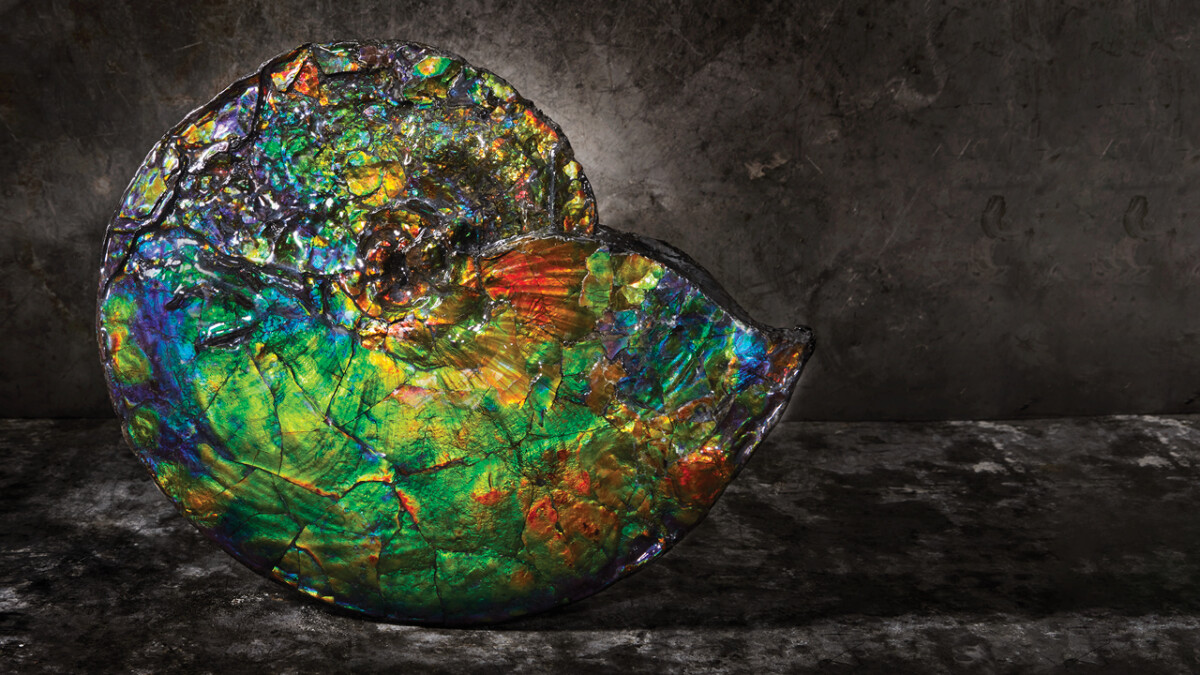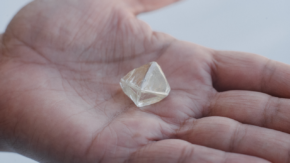Ammolite is a biogenic gemstone that formed after its host — a mollusk-like marine creature called an ammonite — went extinct 66 million years ago. While ammonite fossils can be found in a few locations, gem-quality ammolite comes solely from the nacre of those in southern Alberta, Canada — an area that was once a warm, shallow sea surrounded by tropical rainforests during the late cretaceous period.
Only a fraction of the ammolite extracted from ammonite is gem-quality material. Hundreds of thin, iridescent layers make up the stone, mostly consisting of the mineral aragonite. Each aragonite platelet acts like a tiny prism, allowing for a kaleidoscope of color.
Most ammolite is green and red, with blue and violet being rarer and more valuable, according to the Gemological Institute of America (GIA). In its fractured form, ammolite resembles stained glass, whereas sheet ammolite is an unbroken piece displaying a continuous color pattern. Diversity of color is one of the three big factors that jewelers use in grading this gem; the other two are intensity of iridescence and the nature of the pattern.
Different mining depths tend to produce different qualities. An ammonite deposit’s K-zone — the area 15 to 30 meters below the surface — usually yields ammolite of three grades: standard, A and AA. The blue zone, which is 20 to 65 meters deeper underground, generates AAA-grade material, the highest quality.
While its multichromatic nature makes it look similar to black opal, ammolite ranks only 3.5 to 4.5 on the Mohs hardness scale compared to opal’s 5 to 6.5, and therefore requires delicate handling. Most jewelry makers would double or triple it up with harder stones underneath to increase its durability.
Ammolite has found a particular market in the Far East among those who practice feng shui, the art of arranging one’s living space to create harmony. Feng shui master Edward Li Kui Ming has reportedly hailed it as the “most influential stone of the millennium” because of its positive energy. In North America and the Caribbean, it’s been especially popular among tourists.
Between 5% and 8% of the ammolite mined today is AAA-grade, according to Iniskim International, one of the gemstone’s top purveyors.
“The pricing of ammolite has increased by more than 300% in the last decade alone,” reports company cofounder and president Amarjeet Grewal. “However, during the pandemic, production and sales declined. Since then, [traders have set] a variety of price points to accommodate the market, business stability, and customer expectations.”
Some have compared loose ammolite’s pricing to that of black opal due to their aesthetic similarities, Grewal notes, but despite its shimmering beauty and spectrum of colors, ammolite still costs a fraction of what opals do. That said, designers are seeking rare, distinctive material, and the value of this gem continues to grow with its popularity.
This article is from the July-August 2023 issue of Rapaport Magazine. View other articles here.
Image: Ammolite. (Iniskim International)



